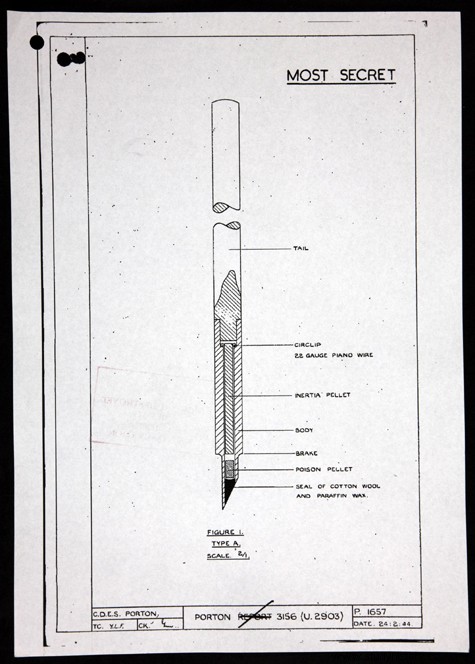I still remember my mother at her old Singer sewing machine where she would spend hours and hours pressing the pedal to sew, take the hem of a pair of pants, sew a skirt... whatever she needed, because my mother, like all of her old, had the soul of a dressmaker. Therefore, when I discovered this story, it seemed surprising to me that a simple needle could become a lethal weapon (When she got stuck, my mom didn't go beyond a simple ouch!)
On December 23, 1941, a strange order was received at the factory for Singer sewing machines in Bristol (England):the largest order of sewing needles in history but not standard needles, but very specific ones according to the specifications that were attached. The next day, a Singer executive replied:
We're not sure exactly what they want. From their specs, it sounds like they need the needles for some purpose that has nothing to do with sewing machines.
I forgot to mention a small detail:the order was made from Porton Down in Wiltshire (England), the Research Center of the Ministry of War where experiments were carried out with chemical and biological weapons. We will leave aside the tests with animals and even with soldiers who were tricked into serving as guinea pigs, and focus on deadly needles.
The Porton Down researchers, led by British bacteriologist Paul Fildes and with the assistance of Canadian and American colleagues, they were working to develop a deadly but non-destructive weapon that could be more effective against troops in the open or in trenches than conventional bombs or mustard gas:anthrax or ricin . Each dart consisted of a hollow steel needle - the ones ordered from Singer - with a paper tail; the tip of the needle had a small deposit with the toxin (anthrax or ricin) sealed with cotton and wax, and on top of the deposit a kind of plunger that, when the dart was stuck, would inertia inject the toxin.

The idea was to bombard the enemy troops with a kind of cluster bomb and in each of them 30,000 poison darts. Animal tests were carried out to calculate the percentages of success on enemy troops and the results ranged from 90% for a soldier in a horizontal position in open terrain to 17% for those who were in the trenches. The consequences of even one of these darts sticking were brutal:if the needle was not removed within 30 seconds, you were dead in less than 30 minutes after terrible convulsions; and even if he ripped it out earlier, he would collapse within 5 minutes leaving him unable to continue fighting. All the tests carried out were successful and they were very cheap to manufacture, but they were discarded because the War Office found them ineffective when enemy troops took cover in buildings or vehicles, something that did not happen with conventional destructive bombs.
Sources and image:BBC, Telegraph
